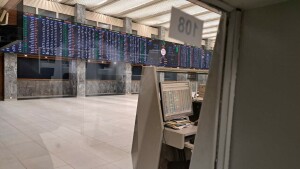Most Asian currencies rose on Thursday, following the Japanese yen as the dollar gave up gains it made after the Federal Reserve's 15th straight rate rise this week, with the Thai baht strengthening the most.
The baht rose a percent from Wednesday's lows. The Taiwan dollar rose a fifth of a percent.
The South Korean won was an exception, undermined by comments from finance ministry official Kwon Tae-kyun, who warned that the won could fall sharply in the first half of the year and that the country's current account would show a deficit in March and April. It matched Wednesday's low at 977.5 per dollar.
The Philippine peso fell initially to 51.36 per dollar, its weakest in nearly four weeks, but ended local trading a shade stronger at 51.25.
"The peso is just tracking US dollar gains across the board and there is some short-covering as well," said Rovic De Guzman, head of trading at Union Bank of the Philippines.
Indonesia's markets were closed on Thursday. The rupiah fell on Wednesday to levels near 9,150 a dollar from the high of 9,000 per dollar hit this week, its strongest since December 2004.
However, analysts talked down the impact on Asia of the sustained selling of the Aussie dollar and high-yielding Latin American currencies in the past two weeks, driven by fears of simultaneous monetary tightening in the world's major economies.
"The idea of hot money flowing out of Asia is tough because there never really was a big inflow," said Shahab Jalinoos, currency strategist at ABN Amro Bank.
That was evident from the relative resilience of Asia's high-yielders, the peso and the rupiah, he said. The peso has shed less than half a percent in the past two weeks while the Brazilian real has lost 6 percent and the Turkish lira more than 3 percent.
"In Asia, the story in the past 2-3 years was never clearly as positive and the trades are not as crowded and overwhelming as in those other markets," Jalinoos said.
Deutsche Bank currency strategist Mirza Baig said fund managers were seeing a surge in investment inflows and would ultimately have to increase their allocations, probably more towards Asian currencies.
Foreign investment in Indonesia was mostly in the bond market, which was less prone to heavy selling due to strong local bids, he said.
J.P. Morgan currency strategist Claudio Piron said investors looking to diversify from Latin American high-yielders would seek Asian currencies.
BR100
15,115
Increased By
28.1 (0.19%)
BR30
43,048
Increased By
175.6 (0.41%)
KSE100
149,493
Increased By
257.8 (0.17%)
KSE30
45,518
Increased By
11.6 (0.03%)























Comments
Comments are closed.